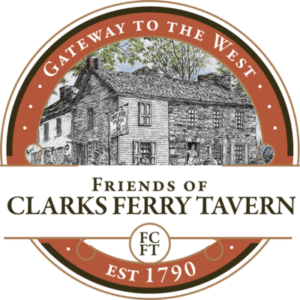OLIVER TOWNSHIP
A Story of River, Rail, Industry, Farms and Homes
Created in 1837 from parts of neighboring townships, Oliver township bears the name of Commodore Oliver Hazard Perry, hero of the War of 1812. Approximately 20 square miles, the township is one of the smaller ones in the county. It surrounds the Borough of Newport and so has shared in Newport’s fortunes. Three villages: East Newport (first known as Habeckertown), Everhartville and West Newport, also identified as Singertown are part of Oliver township.
Oliver Township 1863.
In the early 19th century, travelers between New Bloomfield and Millerstown used township roads, crossing the Juniata about three miles above Newport. This location became known as Rope Ferry, where canal boats were pulled across the river by an endless rope tow. The Pennsylvania Canal (1829) and railroads (1849 and 1891) all passed through the township, providing transportation for local iron, farm and lumber products. In 1839, Mt. Fairview School became the first public school building in the township. Both Little Buffalo and Big Buffalo Creeks pass through Oliver, providing power for several mills, including two established by David English in the 1760s. In 1881, James Everhart built a steam grist and sawmill on the Bloomfield Road. H. R. Wentzel’s Feed Mill on Route 34 stored and sold grain for animal feed for over 80 years. Oliver township’s industrialization in the 19th century supported the growth of Newport and the surrounding area. The Marshall Iron Furnace, a foundry, planing mills, a glue factory, a bottling works, an ice plant, a brick factory and the American Oak Extract Company all were in Oliver.
A conveyor belt carries blocks of ice into the Butturf Ice House above the dam on Little Buffalo Creek, ca. 1910.
In 1910, the Perry County Fair grandstand seated 3,000 people who watched harness racing and other public events.
With the demise of many industries between World War I and II and the rise of the automobile age, many township residents became commuters to Dauphin and Cumberland Counties. Suburban style post War II housing mushroomed on the Juniata Heights in West Newport. Today, the township is mostly rural with woodlands and many productive farms.
Sources: A History of Perry County, Pennsylvania by H.H. Hain; Perry County Grist Mills, by Eugene Eby; “The Real Source of the Name ‘Newport’ and Location of Reider’s Ferry” by Steve Metzger in The Perry Review, 2012-2013. Also Jane Hoover. Research by Glenn Holliman
.

